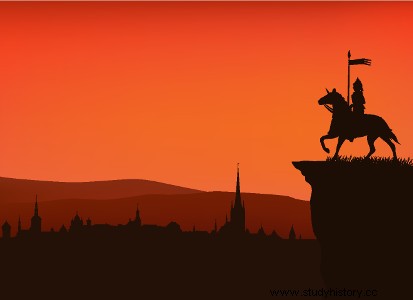
By Rainer Sousa
When we talk about the process of dominating nature, many books are limited to exploring specific events such as the use of fire, the discovery of agriculture or the invention of the wheel. In all these cases, we observe that man is placed as an individual author who, through the use of his mental faculties, has established yet another achievement in the struggle for survival. However, no one usually talks about the gains that human communities gained once they made use of horses.
According to biological studies, the horse has existed for about 55 million years and has in the Eohippus one of its oldest ancestors. Around three million years ago, the Equus species already had hooves and had the ability to spread across different parts of the world. And so, a few thousand years, man and horse would meet to perform various tasks that would involve agriculture, transport, war and even sport.
In Ancient Greece, we have the appearance of the ancient myth of the centaur, a fantastic creature, half man and half horse. From a philosophical point of view, this allegory attested to the combination of intelligence that man possessed with the physical vigor that horses master so well. According to some scholars, this character from Greek mythology would have originated in the ancient nomadic tribes of Asia, who organized their attacks with the use of these animals.
In the medieval period, the Huns were a powerful nomadic community that spent much of their time mounted on the back of this animal. According to some accounts, the Huns fought and, in some cases, slept on the animal itself. Over time, this animal would also become part of the routine of sedentary communities. In this case, the animal's purpose shifted to performing daily tasks and, mainly, agricultural production.
Continuing through the Middle Ages, we see that Europeans incorporated the animal into their world and went so far as to invent academies responsible for the training of animals and the teaching of riding. And don't think that it was only the horses that subordinated themselves to their masters. Pants, so common in contemporary fashion clothing, were initially invented to provide more comfort when riding.
In the Modern Age, more precisely during the period of colonization, horses terrorized Native American populations. Observing the situation, the Spanish conquerors spread rumors that the horses were beasts of demonic origin. According to Hernán Cortéz himself, responsible for the domination of Mexico, the importance of the horse in the conquest of the American continent was second only to divine intervention.
For anyone who thinks that the horse has simply disappeared in the contemporary world, you are wrong. In the first decades of the Industrial Revolution, the growth of urban centers was followed by a resounding number of horses employed in the most varied functions. During the fall of the Ancien Régime and in other war situations, we see that the cavalry was irreplaceable in the organization of war tactics.
Although restricted to the rural and sporting world, we see that horses still show their value in the contemporary world. Several therapeutic treatments recommend horseback riding, as an activity that combines physical effort and the benefits of socializing with the animal. Even in the corporate world, polo is indicated as a sport capable of cultivating leadership and quick decision-making. Apparently, this powerful quadruped still has its place in man's daily life.
